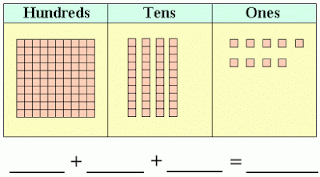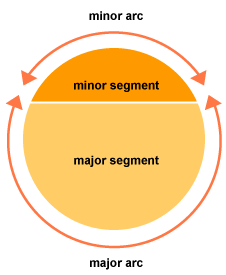In Algebra, Mathematical sentence is a term which is also known as an expression. An expression is usually defined as a sentence that has a number, an operation and a letter in it.
When a mathematical sentence is not in an algebraic form, it will just have two numbers and an operation. In other words, an expression is the mathematical analogue of an English noun. It is a correct arrangement of mathematical symbols which is used to represent a mathematical object of interest.
Example for Mathematical Sentence:
In general, a mathematical sentence is a formula that is right or wrong, true or false. If a mathematical sentence has an equal sign, it is referred as an equation.
Let us consider the following simple examples to show what a Mathematical Sentence means:
3 + 2 = 5. We know this to be true, it is a mathematical sentence.
3 + 4 = 5
we know this to be false, however, since we know definitely that it is false, But still it is a mathematical sentence.
5x + 8 = 13, for all values of x
This statement is neither true nor false: For some values of x, the statement is true and for some other values, it is false. Hence as the statement is neither true nor false, this is not a mathematical sentence.
Mathematical Sentence as an Open Sentence:
A mathematical sentence that contains one or more variables is referred as an open sentence
Some examples for an open sentence are listed below:
2a = 5+ b, 4x = b + 2a
Solved example for an open sentence:
To show ‘3(2b) = 3' an open sentence?
Solution:
Step 1: In the equation given, the number of variable is One
Step 2: Open Sentence is a mathematical sentence with one or more variables
Step 3: So, '3(2b) = 3' is an open sentence.
When a mathematical sentence is not in an algebraic form, it will just have two numbers and an operation. In other words, an expression is the mathematical analogue of an English noun. It is a correct arrangement of mathematical symbols which is used to represent a mathematical object of interest.
Example for Mathematical Sentence:
In general, a mathematical sentence is a formula that is right or wrong, true or false. If a mathematical sentence has an equal sign, it is referred as an equation.
Let us consider the following simple examples to show what a Mathematical Sentence means:
3 + 2 = 5. We know this to be true, it is a mathematical sentence.
3 + 4 = 5
we know this to be false, however, since we know definitely that it is false, But still it is a mathematical sentence.
5x + 8 = 13, for all values of x
This statement is neither true nor false: For some values of x, the statement is true and for some other values, it is false. Hence as the statement is neither true nor false, this is not a mathematical sentence.
Mathematical Sentence as an Open Sentence:
A mathematical sentence that contains one or more variables is referred as an open sentence
Some examples for an open sentence are listed below:
2a = 5+ b, 4x = b + 2a
Solved example for an open sentence:
To show ‘3(2b) = 3' an open sentence?
Solution:
Step 1: In the equation given, the number of variable is One
Step 2: Open Sentence is a mathematical sentence with one or more variables
Step 3: So, '3(2b) = 3' is an open sentence.











